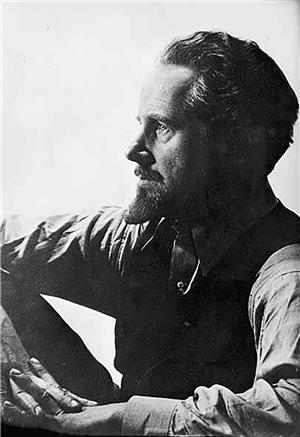In November or December 1935, the painter Mark Tobey (1890-1976) paints his first "white-writing" style paintings. Tobey, who moved to Seattle in 1923, is in England at the time, teaching at Dartington Hall in Devon. In the innovative paintings, he attempts to capture the frenetic energy he has experienced in New York City. The "white writing" paintings ultimately become an important influence in the development of Abstract Expressionism, especially on the work of Jackson Pollock. Mark Tobey returns to Seattle, and emerges as a leading painter of the Northwest School. He is the first to become internationally known.
According to Deloris Tarzan Ament, "Sometime in November or December [1935], at Dartington Hall, working at night, listening to the horses breathe in the field outside his window, he painted a series of three paintings, Broadway, Welcome Hero, and Broadway Norm, in the style that would come to be known as "white writing" (Ament).
It wasn't until the mid-1940s that Tobey's paintings in this new style became recognized and appreciated. Broadway was purchased by New York's Metropolitan Museum of Art in 1943. Tobey's friend Elizabeth Bayley Willis showed Jackson Pollock Tobey's painting Bars and Flails in 1944. Pollock studied the painting closely and then painted Blue Poles, a painting that made history when the Australian government bought it for $2 million.
Pollock's biographers write:
"...[Tobey's] dense web of white strokes, as elegant as Oriental calligraphy, impressed Jackson so much that in a letter to Louis Bunce he described Tobey, a West Coast artist, as an 'exception' to the rule that New York was 'the only real place in America where painting (in the real sense) can come thru'" (Jackson Pollock).

